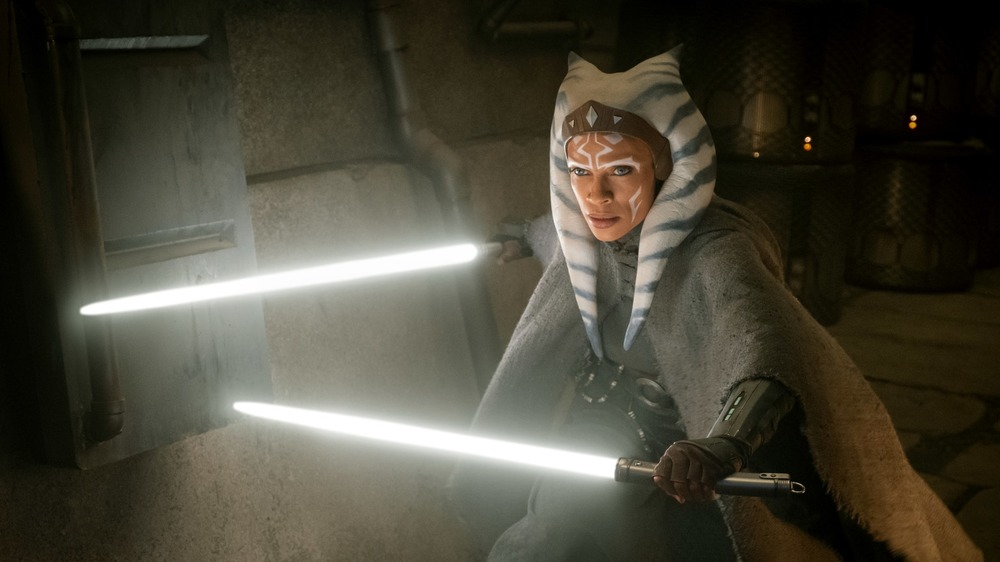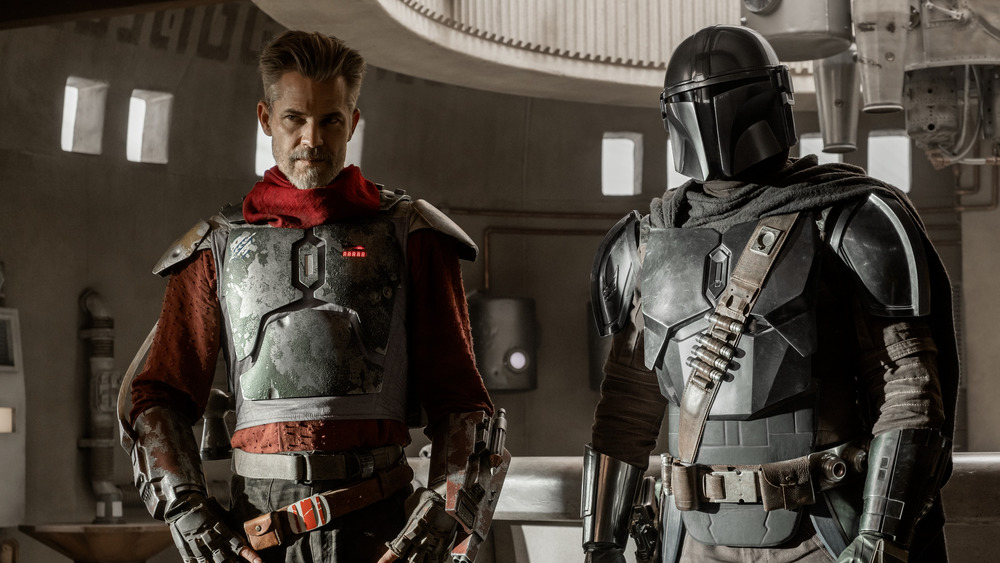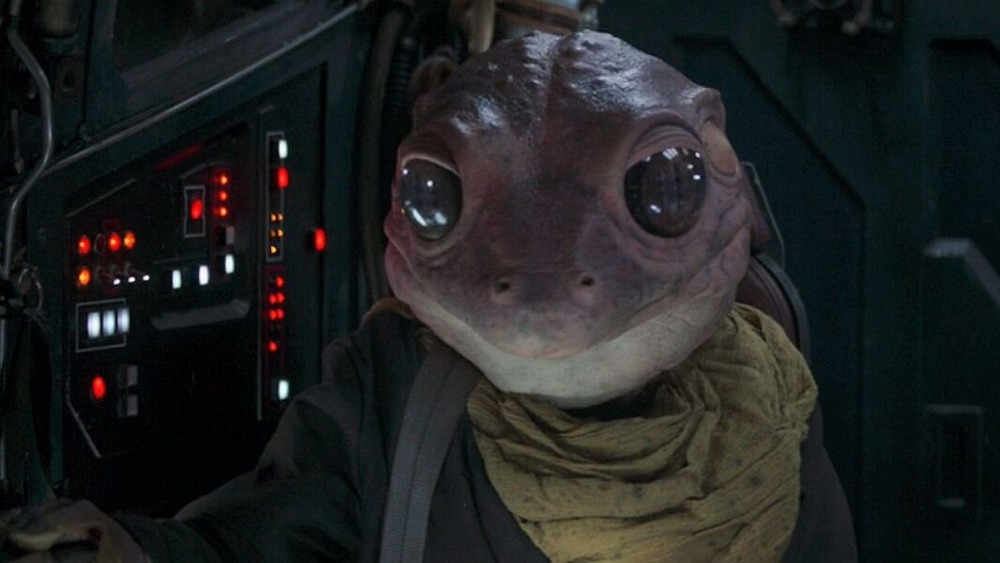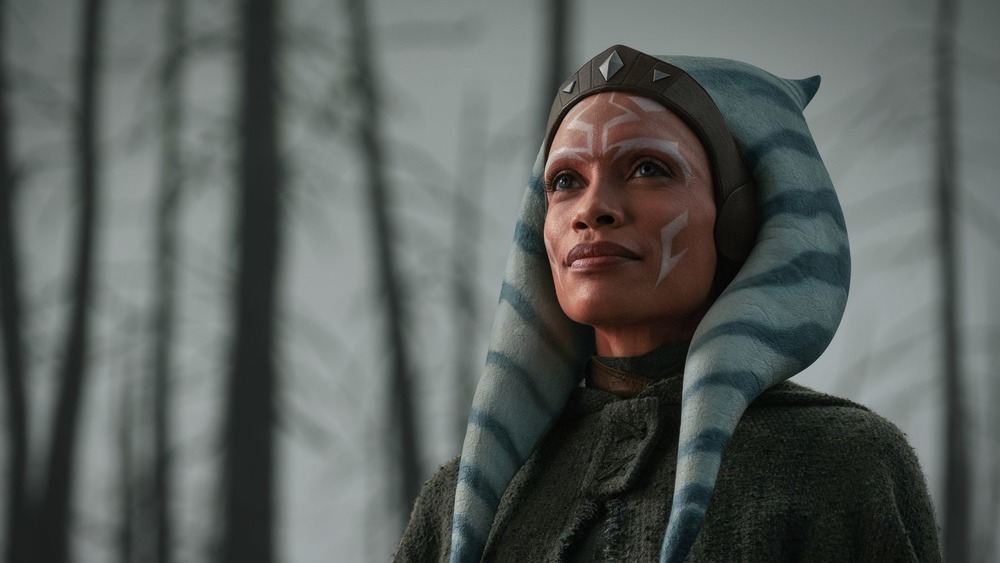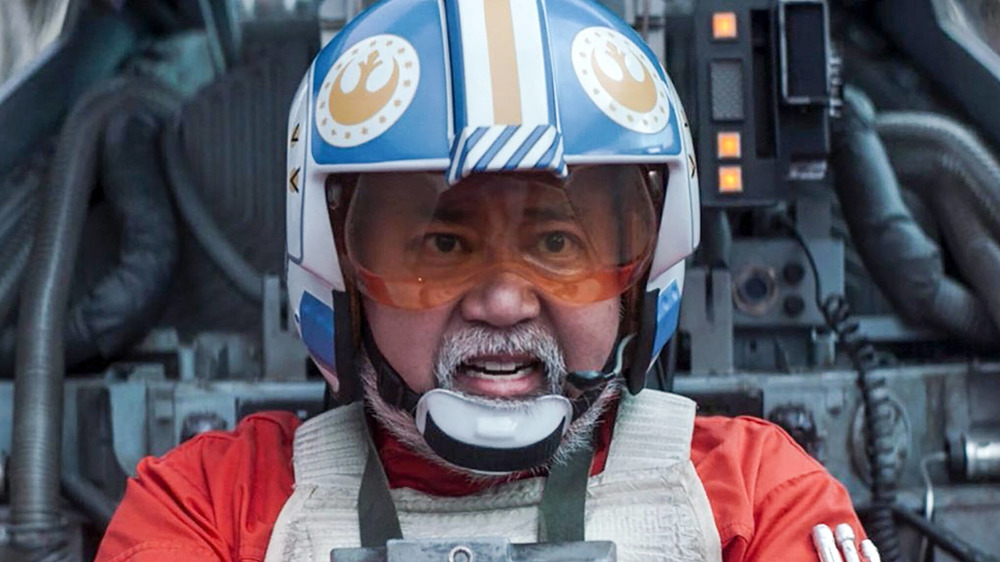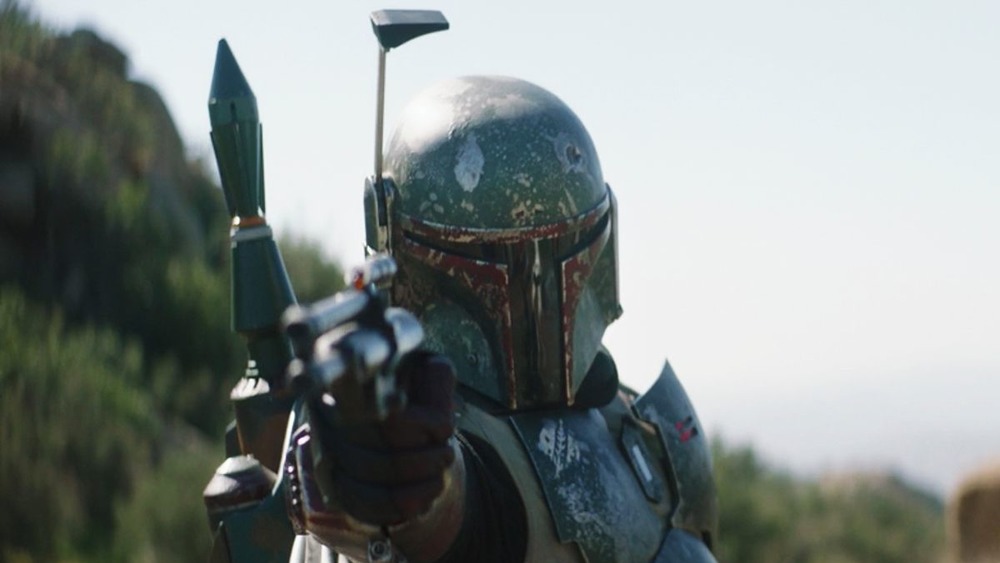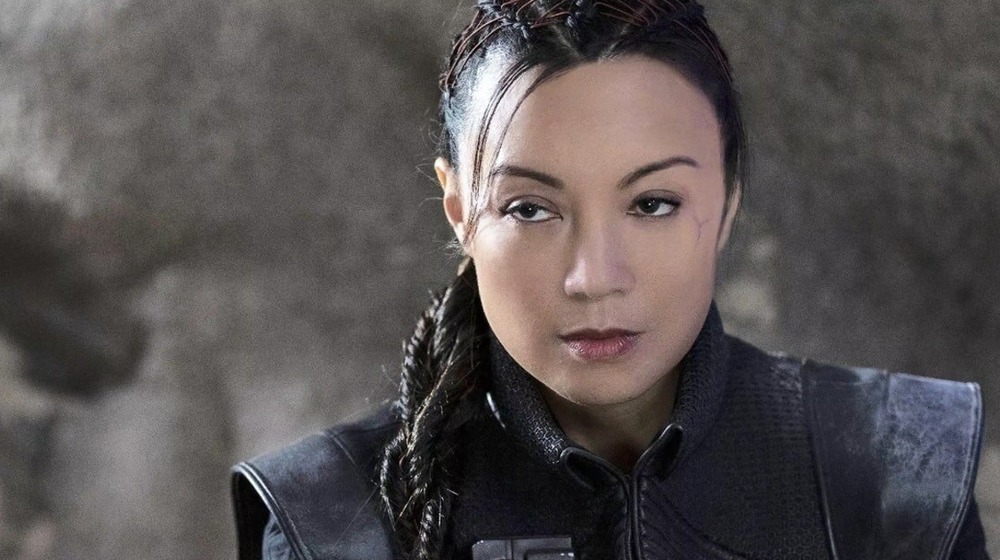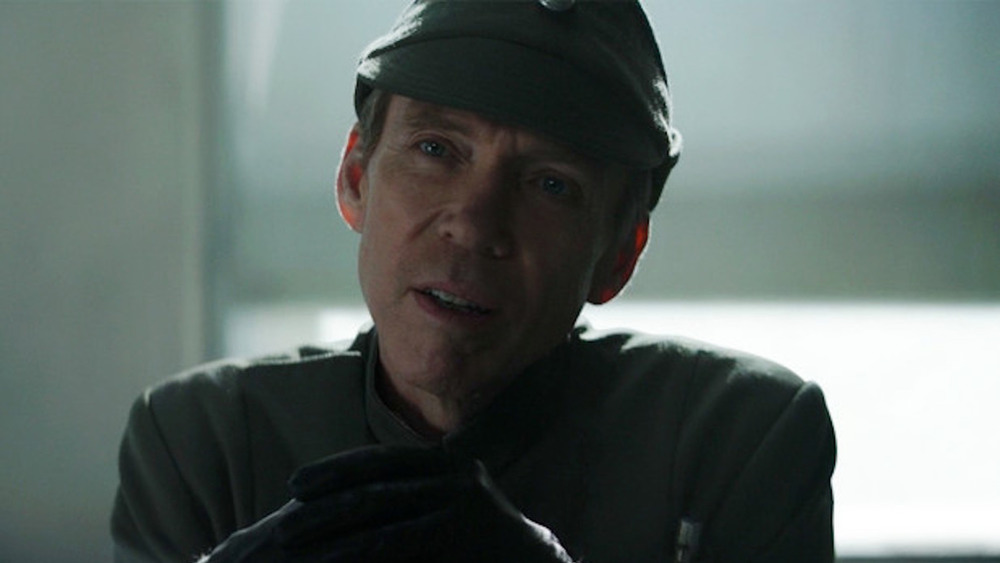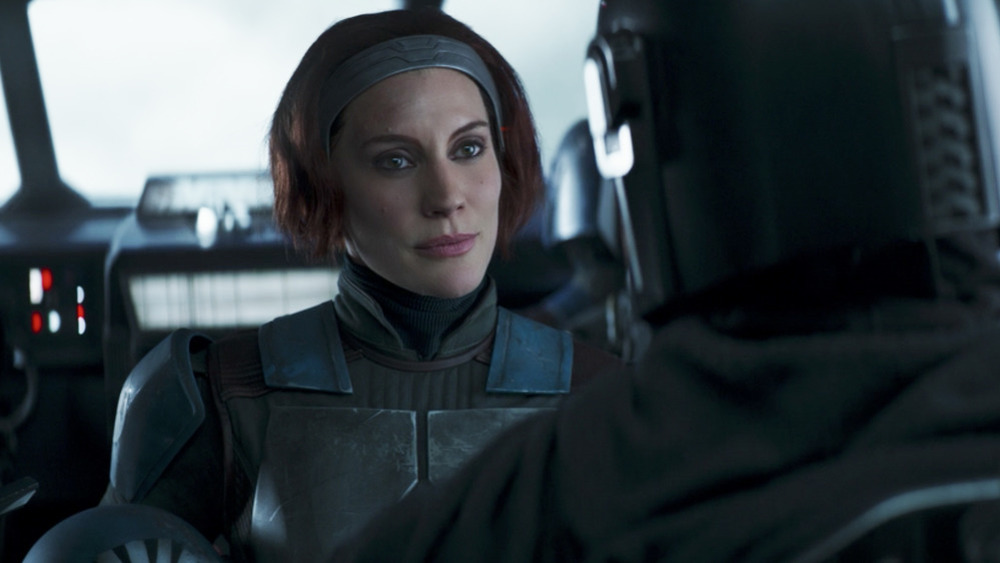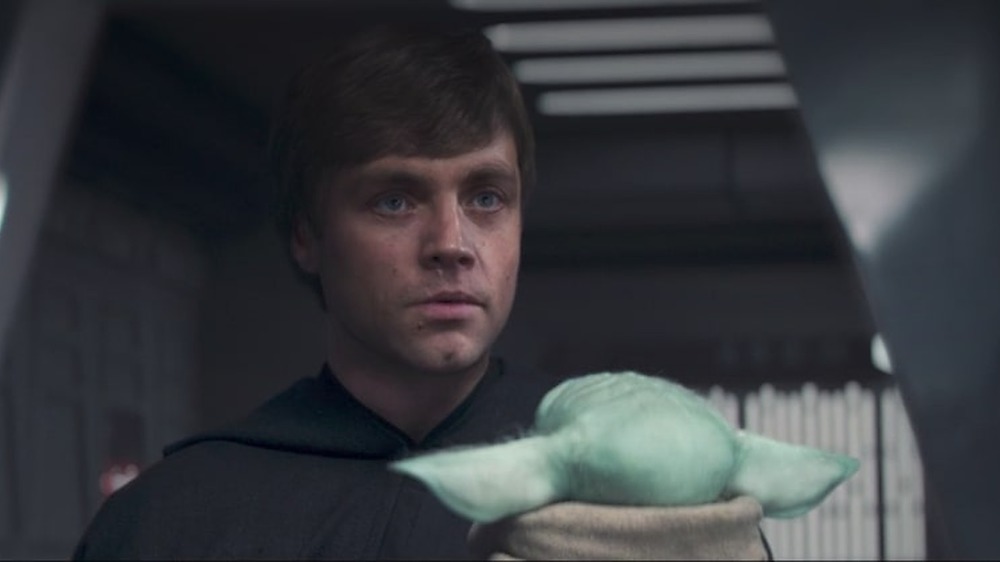Mandalorian Season 2 Characters Who Mean More Than You Know
This article includes spoilers for The Mandalorian season 2 finale.
The Mandalorian season 2 threw so many curveballs, not even Baby Yoda would have been able to sense what it had in store. The series, which focuses on the Mandalorian Din Djarin, is no stranger to pulling in beloved characters from different areas of the Star Wars universe. However, season 2 doubled down on the addition of familiar faces scattered through the galaxy far, far away.
As well as expanding on lore and characters we've seen before, the second season retcons some major story arcs that span all the way back to the original Star Wars trilogy. But even the new characters created for the series provide fresh perspectives and insight on the state of the galaxy's civilization. From the first episode of the show's second season to its last, these Mandalorian characters mean more to the series — and the universe at large — than fans might think.
Cobb Vanth: Space cowboy
Star Wars has long been something of a space western, but The Mandalorian episode "The Marshall" takes that ten steps further. Here, we meet a character who at first appears to be a resurrected Boba Fett, but turns out to be a gun-slingin' space marshall named Cobb Vanth. With the Empire fallen and Jabba the Hutt taken down, Tatooine is left with a bunch of mining syndicates vying for power. The planet has seen its fair share of disorder, but someone had to set things straight after the Resistance took down the Empire, so why not a space sheriff?
Though the episode is Vanth's first onscreen introduction to the Star Wars universe, he appeared in Chuck Wendig's canon trilogy Aftermath before appearing in The Mandalorian. There, we learn that Vanth is a former slave and member of Darth Maul's Crimson Dawn, the crime syndicate introduced in Solo: A Star Wars Story. That film, starring Alden Ehrenreich as young Han Solo and Donald Glover as young Lando Calrissian, ends on a massive reveal: Maul has been pulling the strings behind the scenes.
As the film bombed at the box office, it's unlikely fans will see a sequel, but with the new Lando series slated for Disney+, we just might get to see more of Darth Maul and Crimson Dawn — perhaps leaving room for more of Cobb Vanth's story to be told. After all these years, an honest-to-Force space western might be just what we need in a galaxy far, far away.
Frog Lady: The voice of crying galaxy
The Mandalorian season 2 character known as the Frog Lady may not have a meta backstory within the Star Wars universe. But her struggle speaks volumes for where the galaxy is following the savage ruling of the Empire. Frog Lady is on a mission to deliver her eggs back to her homeworld on the estuary moon Trask. As she and her husband are two of the final remaining members of her species, she's desperate to keep the eggs safe from harm. No pressure.
In comes Baby Yoda, who's seemingly never met an amphibious creature he didn't want to eat. Despite being told not to by Mando, the voracious youngling consumes several of her eggs. This posits two questions that extend beyond the scope of the episode: Did the Child just worsen a genocide, and how much of the galaxy's population has been destroyed by the war that's been raging for over almost two decades? Some fans were furious after Baby Yoda's consumption of Frog Lady's eggs was played for laughs during the episode. Sure, he doesn't really understand what he's doing (at least it appears he doesn't), but Mando's attempts to get him to stop are ineffectual at best.
Frog Lady provides us with a deeply personal look at the state of civilization throughout the galaxy. Much of the Star Wars franchise focuses on massive battles without shining much light on the aftermath of that destruction. How many other species are close to if not completely wiped out after the Empire's destruction? Not all species eliminations come from the massive blast of a Death Star, and Frog Lady shows us how deep and vast the hurt following war can be for the beings caught in its wake.
Ahsoka: The former Jedi
It's not often that a Jedi leaves the Order — but then again, Ahsoka Tano is no ordinary Force-wielder. Ahsoka, voiced by Ashley Eckstein, first graced the Star Wars screen during the 2008 animated film Clone Wars, which spawned a TV series of the same name. While Ahsoka's final scene in the Clone Wars series finale leaves her journey open-ended, viewers do know Anakin Skywalker's former padawan has left her role as a Jedi completely behind. Yet as we see in The Mandalorian, she doesn't abandon the Force.
Rosario Dawson assumed the role of Ahsoka for The Mandalorian. Before her appearance in the show's 13th episode, "The Jedi," the Force-wielders viewers have seen typically brandish red, blue, or green lightsabers — with the exception of Mace Windu's purple saber and Rey's yellow one. When she appears for the first time in The Mandalorian, Ahsoka wields a pair of white lightsabers, which she purified from Dark Side crystals.
Canon projects like Clone Wars, comic books, and novels have introduced fans to numerous Force-wielders (and their lightsabers), but onscreen, Ahsoka is the first Force-sensitive character who's actively wielded the Force while rejecting the Jedi way. Her choice to follow her own rules leaves room for fascinating storylines and characters that don't jibe with Jedi beliefs.
Ahsoka Tano lies somewhere between the Dark Side and the Light Side, and Force-wielders who don't want to commit to either extreme can learn a lot from her. The former Jedi left her mark on The Mandalorian by shedding light on the life of the Child, a.k.a. Baby Yoda a.k.a. Grogu, when she revealed his true name and his past as a padawan at the Jedi Academy. That was just the beginning: Rosario Dawson's Ahsoka is getting her very own self-titled show on Disney+.
Captain Carson Tiva and Trapper Wolf: Rangers of the new republic (maybe)
Given that The Mandalorian focuses on characters who have reasons for avoiding the New Republic after the fall of the Empire, it's unsurprising that we don't see many former Rebels. Pilot Carson Teva and his wingman Trapper Wolf are exceptions. Along with others from the Rebel ranks who helped take down the Empire, the pair now monitors goings-on in an official capacity, policing a galaxy healing after decades of strife.
Mandalorian viewers are introduced to the duo in Chapter 10, "The Passenger," when Mando's attempt to avoid them nearly gets him eaten by a giant space spider. It isn't just that he's feeling shy: After the Teva and Wolf rescue him, we find out there's a warrant out for his arrest. When Mando asks Teva if he's going to try and take him into custody, the pilot admits he ought to. "But," he shrugs, "these are trying times." For better and for worse, the New Republic is far from the authoritarian regime that the Empire was.
This encounter is more than a glimpse at Republic police work in action, however. The Mandalorian also threw in a fun Easter egg for fans to discover: Longtime Star Wars writer and Mandalorian producer/occasional director Dave Filoni plays trapper Wolf. And what's more, some fans have theorized that Paul Sun-Hyung Lee's Carson Teva may headline the Star Wars Disney+ series Rangers of the New Republic. The show's timeline will take place during the same time as The Mandalorian and Ahsoka, making it the perfect fit.
Boba Fett: The ghost
We all know Boba Fett is important, but let's be real: he's pretty lame in the original trilogy. We see him stumble over his armor, we barely hear him speak, and he's accidentally bested by a blinded Han Solo. As far as villains go, Star Wars has done better. But is he really a villain? The original series gave fans no reason to believe Boba Fett wasn't team Empire. However, given his urge to help Mando and the warrior's code of ethics he shows in season 2 of The Mandalorian, it's hard not to wonder if the Empire forced his hand.
Following his surprise return and subsequent role in rescuing Grogu from Moff Gideon, Boba Fett's slate is clean at the end of The Mandalorian season 2, which finds him returning to Tatooine and taking over Jabba the Hutt's palace. We've yet to learn what the former bounty hunter has been up to all these years. Was he stuck in the digestive tract of a Sarlacc for several years, or did he escape soon after Han knocked him into the pit?
Maybe Boba Fett became super zen as he was slowly digested for decades. Or perhaps his motives aren't as pure as they might seem. He does save Fennec Shand, noting, "She was left for dead on the sands of Tatooine, as was I. But fate sometimes steps in to rescue the wretched." The line implies that while maybe he was the villain everyone believed him to be, he learned from his mistakes and wants to help others learn, too. Then again, the teaser for his Disney+ series The Book of Boba Fett suggests otherwise. He's a little too smug when he kills Bib Fortuna and claims his throne with Shand lounging by his side.
Fennec Shand: The fox
What does it take to stop Fennec Shand, an assassin, from killing people for money? A near-death experience, apparently. But better a change of heart late than never — if Fennec Shand has, in fact, changed her tune. We briefly learn about the assassin in season 1 of The Mandalorian, when we discover that she's a mercenary who worked (and killed for) the Hutts. Yes, those Hutts — Jabba and company. Yet it's not until season 2 that her character is fully fleshed out. Kind of.
Fittingly, given that Shand is named after the desert-dwelling fennec fox, the assassin is sly and her motives often unclear. Star Wars has a severe lack of female villains, and Ming-Na Wen's portrayal of Fennec Shand marks the first female Star Wars villain of Asian decent — something Wen expressed appreciation for during an interview with Vanity Fair.
While Shand isn't exactly a hero, she does have some kind of code. The mercenary follows Boba Fett after he saves her from death, and she even puts her life on the line to help Mando find Grogu (Baby Yoda) when Moff Gideon's dark troopers kidnap him. Both she and Boba Fett are incredibly hard to read, but now, we're getting a full series seemingly centered around them in December of 2021. Hopefully, the new series will answer all of our burning questions. If not, the trailer for the animated series Star Wars: The Bad Batch appears to show the mercenary, though the moment passes in a flash. Either way, we'll be seeing a lot more of Fennec Shand.
Valin Hess: The follower
Valin Hess may be a new character for The Mandalorian, but what he represents goes far beyond his character's scope. Star Wars has a significant number of villains, but most of them are surface-level unless they appear prominently on a movie poster. We all hate Grand Moff Tarkin, leader of the Empire army. Still, beyond scenes when he demonstrates his cunning nature or talks about military tactics, we don't get a sense of who he is or why he's perfectly fine decimating entire planets. It's a real flaw in the Star Wars universe — we often don't know why characters do the things they do, outside of fear and a lust for power. It's always interesting, then, to hear from some lower-level villains. And we finally get that in The Mandalorian Chapter 15, "The Believer."
In the episode, Mando has to sneak into an ex-Imperial base with frenemy and former Imperial sharpshooter Migs Mayfeld, and before the pair can sneak back out, they're cornered by Hess, who was Mayfeld's superior officer at one point. When Mayfeld asks Hess how he could sacrifice his entire division to wipe out a city, Hess says, "You see, boys, everybody thinks they want freedom, but what they really want is order. And when they realize that, they're gonna welcome us back with open arms." Smugly arguing that such decisions constitute "a small sacrifice for the greater good," Hess toasts the Empire — at which point Mayfeld shoots him dead. Hess' monologue offers a rare glimpse into the mindset of the Empire's military commanders, and it's chilling — even though his answer doesn't come as a surprise.
Bo-Katan Kryze: Leader of Mandalore
Star Wars fans who haven't tuned into the animated series Clone Wars and Rebels might not be able to guess by her appearance in The Mandalorian, but Bo-Katan Kryze is kind of a big deal on Mandalore. We see glimpses of this in her Mandalorian scenes, but nothing like the other series: Bo-Katan is devoted to returning Mandalore to its former glory, and she's taken on the likes of Darth Maul to prove it.
By the time we see her in The Mandalorian season 2, Bo-Katan is in hot pursuit of the Darksaber, which is being wielded by Moff Gideon — a quest that grows more complicated still after Mando becomes its rightful owner by defeating Gideon in combat during the season finale. Din tries to give her the weapon, but as a delighted Gideon points out, the Darksaber must be won to wield its proper power.
It's unclear at the close of season 2 just how much Mando's ownership of the Darksaber will mean for Mandalore and Bo-Katan, but any conflict between the two won't be the first time they've clashed. When they meet, she scoffs at Mando's refusal to take off his helmet, basically accusing him of following an archaic, cult-like faction of Mandalorian tradition. Being faced with Bo-Katan's assertion that you can be a Mandalorian without shielding your face from the galaxy marks the first time Mando really questions his staunch beliefs — a question that evidently lingers, as we see him doff that helmet on multiple occasions later in season 2, particularly in the poignant closing moments of the season finale, when he removes it in order to give Grogu a proper goodbye.
Luke Skywalker: Forever young
We need to talk about Luke Skywalker's appearance in the Mandalorian season 2 finale — and what it means for the Star Wars franchise moving forward. Disney billed Episode IX, The Rise of Skywalker, as the swan song to the Skywalker saga. Rey even buries Luke and Leia's lightsabers, putting their storyline to rest. It wasn't subtle. At all.
Yet the Mandalorian season 2 finale brought us a reemergence of the Skywalkers in a major way. Luke saunters onto Moff Gideon's ship, decimating an entire squad of dark troopers in his response to Grogu's call. It's clear from the minute a hooded figure brandishes a green lightsaber that Luke is under the shroud of mystery. But many fans were still thrilled to see him remove his hood, looking and sounding just like he did in Return of the Jedi.
While the moment is one of triumph, it also poses the question: Just how far will this go? At what point do we honor what the original series brought us by laying it, and its characters, to rest? Will Disney be whipping out CGI Luke in another 30 years? If Luke is fair game, then who else are they going to CGI back into existence? With a slew of Disney+ shows on the horizon, including Obi-Wan Kenobi and Lando, it's hard not to wonder whether the Skywalker era will ever be over. And while, for nostalgia's sake, that's a great comfort, it also might prevent other great stories from emerging. The bottom line? Disney lied when they said The Rise of Skywalker was the end of the Skywalker story... but fans have to admit the scene was still pretty epic.
